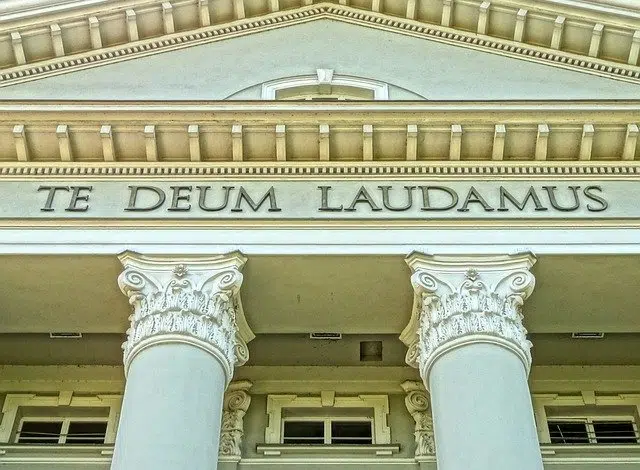
The Church of the Holy Apostles Peter and Paul in Bydgoszcz
The term tedeum arose from the Latin expression Te Deum , which translates as “to you, God.” This is how a Catholic hymn known, precisely, as “Te Deum” begins.
A liturgical hymn
The liturgical hymn that Catholics sing in the context of thanksgiving is called tedeum, therefore. Today it continues to be part of the masses , generally integrating the Liturgy of the Hours .
The tedeum is also chanted at the ordination of priests and in the ceremonies carried out to canonize someone. When a pope is elected, meanwhile, the tedeum is sung by the cardinals and then by believers in the different cathedrals as a way of gratitude for the election of a new Supreme Pontiff .
Tedeum lyrics
Although there is more than one version of the Te Deum , one of them is the one that is used most frequently, and it is precisely the one that we will analyze below. The original text was written in Latin, but in this case we will take a look directly at its official translation into Spanish. In the first stanza he expresses a feeling of praise to God, whom he recognizes as the "eternal Father" and assures him that all creation venerates him.
He continues by stating that there is no one who does not honor him, that the cherubs and seraphim continually sing a song of praise to him, exalting the "majesty" of his glory, which can be appreciated both in heaven and on earth. Everyone praises God, from the apostles to the martyrs, including the prophets. He emphasizes that Jesus is the "only and true son" , who defends us and deserves our adoration, which is why the entire Church acclaims him.
The tedeum continues to praise Christ, accepting him once again as the "Only Son", as the "King of glory" and thanking him for having accepted his human form without any contempt for this condition . He then goes on to talk about the Resurrection and Ascension, after which he arrived at the Kingdom of Heaven and sat at the right hand of God. He anticipates the day when he will return to earth to judge us, and begs him to help us, speaking in the first person like the servants whom he redeemed with his blood.
At the end of the tedeum, the faithful ask the Lord to save, guide and bless them, assuring him that they bless him and praise his name every day, and that they will do so until eternity. They also ask him to protect them from sin and have mercy on them, something we find in other prayers of the Christian liturgy. In closing, they ask him for his mercy to come upon them, just as they hope, and they assure him that they will never again be able to feel let down by him.
Fuzzy origins
According to tradition , the tedeum was composed by Saint Augustine of Hippo and Saint Ambrose of Milan in 387 . Upon baptizing Saint Augustine , Saint Ambrose began to improvise the hymn under the inspiration of the Holy Spirit , while Saint Augustine responded. However, some research maintains that the tedeum was actually created by Anicetus of Remesiana in the 4th century .

The tedeum or "Te Deum" is a very important liturgical hymn
The celebration
The notion of tedeum is also used to refer to the Catholic celebration that takes place at the end of the year or in tune with some national holiday . The tedeum is usually celebrated by the pope during December 31 , for example.
In Latin America , the tedeum is developed to give thanks during national holidays. This occurs in Argentina , the Dominican Republic , Chile , Panama , Guatemala and Paraguay , among other countries .
